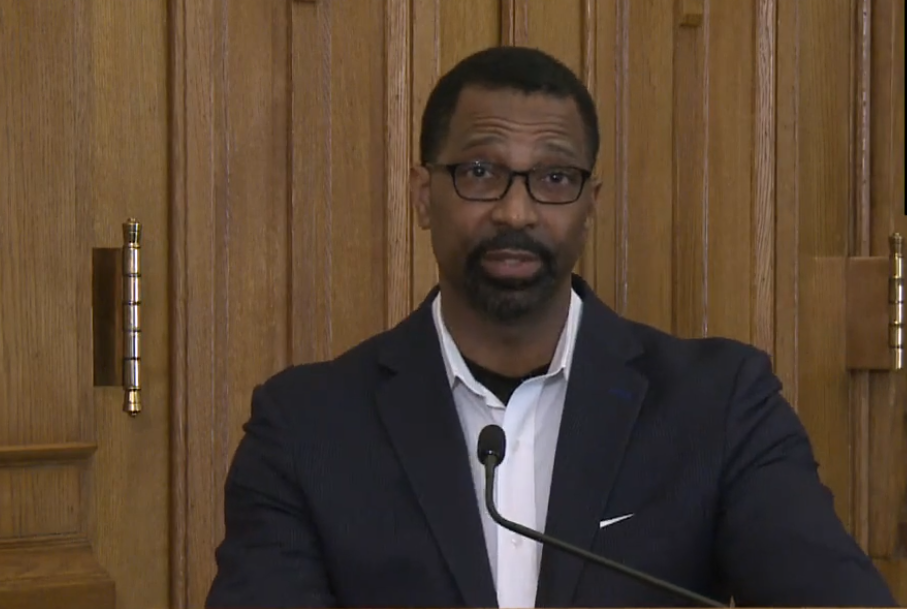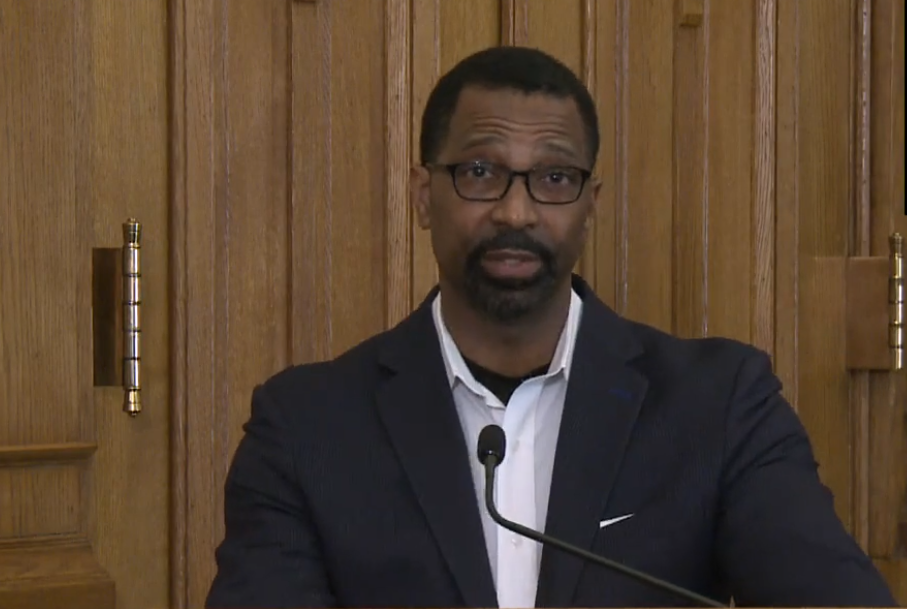Unemployed Hoosiers shouldn’t count on receiving $400 weekly assistance promised by Trump

Fred Payne, commissioner of the Indiana Department of Workforce Development, speaks Wednesday in the governor’s office about the continuing uncertainty over the availability and distribution of the $400 a week in disaster assistance to unemployed workers promised Aug. 8 by President Donald Trump.
Screenshot
Hoosiers out of work due to the coronavirus pandemic hoping to get by on the $400 in weekly assistance promised Aug. 8 by President Donald Trump might find it in their financial best interest to seek other sources of income.
That’s because Indiana has not yet committed to participating in the program — which aims to replace the now-expired $600 a week in supplemental federal unemployment benefits — and even if Indiana signs on, it will take some time before the money goes out.
Republican Gov. Eric Holcomb last week told reporters the executive action signed by the Republican president at Trump’s New Jersey golf club did not come with a lot of details about how the program will work or what states are required to do to implement it.
The president allocated $44 billion in federal disaster relief funds to provide $300 a week in lost wages assistance to eligible claimants through Dec. 6, provided states kick in an additional $100 per person for a total of $400 a week, according to Trump’s memo.
The directive did not specify where states are supposed to get the money to cover their share of the assistance, since even states with hefty budget reserves, like Indiana, are quickly spending through them due to sharp reductions in sales and income tax revenue caused by COVID-19 business closures and record levels of unemployment.
“We have not made final, final decisions on the latest executive orders that came out of the president’s office last weekend,” Holcomb said.
“This is a lot of new guidance and there’s still some questions still up in the air before we make final decisions.”
Fred Payne, commissioner of Indiana’s Department of Workforce Development, said he’s constantly been on the phone since last week with the U.S. Department of Labor and the Federal Emergency Management Agency trying to figure out how Indiana should distribute what technically are disaster relief funds through the state’s unemployment insurance program, as required by Trump’s memo.
“Right now, Indiana, just like all of the other states, we’re not in any position to give any definitive answers on just how that will look and how it plays out,” Payne said.
“The one thing that we do know for sure is that this will require us to create a new system — yet again.”
DWD already created a parallel system to Indiana’s regular unemployment system earlier this year to deliver Pandemic Unemployment Assistance to tens of thousands of “gig” workers, and other irregularly employed Hoosiers, made eligible for unemployment benefits due to COVID-19.
But it took approximately three months following the start of the pandemic for those funds to be distributed, in some cases retroactively, to Hoosier recipients.
“This will be, again, another system,” Payne said. “So we’re working, not only with those federal partners, but we’re also working with our sister agency here — Homeland Security — to make sure that we shore up any gaps before we go ahead and make any decisions.”
In May, the Democratic-controlled U.S. House approved legislation, known as the HEROES Act, to simply continue the $600 a week in supplemental federal unemployment benefits through January 2021, among other provisions.
The measure did not advance in the Republican-controlled Senate due to concerns by U.S. Sen. Mike Braun, R-Ind., and others, that paying Hoosiers the equivalent of $15 per hour for not working during the pandemic makes it difficult for Indiana businesses to attract employees to jobs paying at or near the state’s $7.25 per hour minimum wage.
Ultimately, the Senate recessed until September without approving any legislation. As a result, the $600 weekly benefit created by the CARES Act expired July 31, dropping the maximum unemployment benefit for Hoosiers out of work through no fault of their own to $390 per week.
State data show approximately 380,000 Hoosiers, or 11.2% of Indiana workers, are unemployed, nearly four times the 99,892 Hoosiers (3%) recorded as out of work in March before the pandemic, and a variety of COVID-19 prevention measures, cratered Indiana’s economy.









